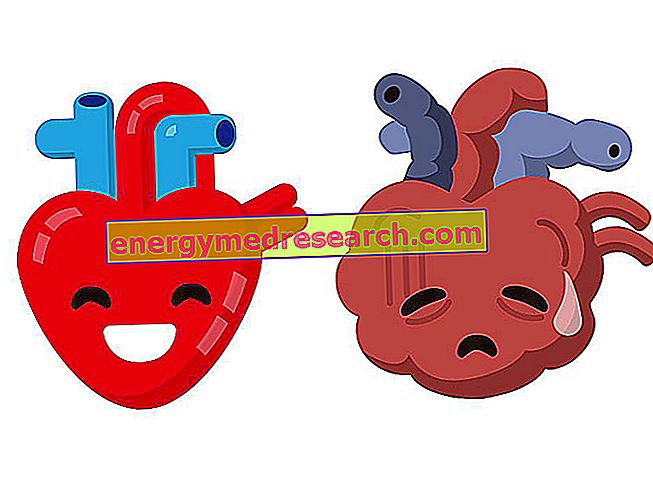What's this
What is the casatiello?
Casatiello is the name of a typical Easter recipe from Campania, of which however there are numerous versions.

The most famous is the Neapolitan one, but there are variants from Caserta, Nola, Salerno and Vesuvius - that is, from the areas surrounding the volcano. It can essentially be divided into two main types: salty and sweet.
The casatiello has the appearance of a donut of bread, on top of which whole hen eggs with shell are partially sunk, further caged with strips of woven dough. This form would have a symbolic explanation of a religious nature, linked to Easter, or to the crucifixion and resurrection of Jesus. As some literary traces show, the recipe should have originated around the 16th century; the etymological root derives from the Neapolitan word for small cheese.
That of the casatiello is a fairly complex recipe. The main ingredients are wheat flour, seasoning fats, cheese and eggs; almost all of them also make Neapolitan salami. This makes it impossible to assign specific nutritional purposes and a role in the diet. It is rich in lipids and complex carbohydrates, an aspect that determines a high caloric value. There are also fibers, vitamins, minerals, cholesterol etc.
Casatiello can be used as a secondary snack, mid-morning or mid-afternoon. In the main meals of a balanced diet it is difficult to contextualize since, by providing many calories and engaging digestion, it does not leave much room for the insertion of other foods.
The casatiello recipe is not too complicated but rather long; for a good result it must be scrupulously respected. Later we will go into more detail.
recipe
Recipe of the salted casatiello
Ingredients for the salted casatiello
- Wheat flour type 00 650 g
- Water 375 ml
- Eggs 200 g (4 whole eggs with shell)
- Caciocavallo cheese 150 g
- Neapolitan salami 150 g
- Extra virgin olive oil 25 g
- Lard 25 g
- Salt up to 15 g
- Dry yeast 10 g
- Ground black pepper QB
Process for the salted casatiello
- Warm the water and dissolve the yeast in it
- In a bowl or in a planetary mixer with hook attachment, add the oil and the lard by mixing / kneading at low speed until the mixture becomes fairly uniform
- Add half of the flour a little at a time, forming a batter
- Add the salt and the rest of the flour all together, increasing the rhythm of the dough
- After about 10 minutes transfer to a pastry board and separate 50-80 g - destined to make strips of pasta to cage the eggs on
- Dice the caciocavallo and salami, and wash the eggs
- Spread the dough by hand, maintaining a thickness of about 1 cm, and add the cubes of caciocavallo, salami and ground black pepper; then close it or roll it up, then knead it manually making it uniform
- Give the shape of a loaf to the dough and lay it - closing it in a ring - in a cake tin from 24 cm in diameter previously greased or non-stick
- With the compound previously separated, make strips; half sink the eggs in the dough and cage them with the latter forming a cross
- Cover everything with a twister and let rise until it reaches twice the volume. The weather will vary significantly depending on the environment; if the temperature is below 20 ° C it could take half a day, in the leavening chamber instead, a couple of hours might be enough. Using sourdough or sourdough, it is more likely that the time is 12 hours
- Preheat the oven in static mode at 170 ° C; Bake the casatiello and wait about an hour and a half. Pay attention to the position of the casatiello in the oven, which is not too exposed above or below
- Allow to cool to prevent it from breaking; then unmold and serve in slices.
Nutritional Properties
Nutritional properties of casatiello
That of casatiello is a high calorie recipe, whose energy comes primarily from carbohydrates, followed by lipids and finally by proteins. Carbohydrates are mainly complex (starch), predominantly unsaturated fatty acids and high and medium biological value peptides - due to the presence of various kinds of food.
Contains fiber in moderate amounts, while cholesterol is abundant. It brings gluten, lactose, purine and phenylalanine amino acid to significant levels, which can harm hypersensitive individuals. It is possible that, in the case of particularly marked intolerance, even the concentration of histamine and / or liberating foods may be problematic.
The casatiello has an interesting vitamin profile, even if the very prolonged cooking tends to impoverish it significantly. It has an excellent concentration of water-soluble B-group molecules, such as thiamine (vit B1), riboflavin (vit B2), niacin (vit PP), pyridoxine (vit B6) and cobalamin (vit B12). There are also liposoluble molecules, such as retinol and equivalents (vit A and RAE) and calciferol (vit D); small concentrations of vitamin E (alpha tocopherol) can be inferred. With regard to minerals, phosphorus, iron and zinc levels stand out above all; also the quantities of calcium and potassium are interesting. The sodium level, undoubtedly relevant, can be considered excessive.

| Nutritious | Quantity' |
| water | 45.7 g |
| Protein | 12.2 g |
| Lipids | 10.19 g |
| Saturated fatty acids | 4.00 g |
| Monounsaturated Fatty Acids | 4.32 g |
| Polyunsaturated Fatty Acids | 1.23 g |
| Cholesterol | 80.5 mg |
| TOT Carbohydrates | 32.0 g |
| Starch / Glycogen | - g |
| Soluble Sugar | 1.2 g |
| Food fiber | 1.1 g |
| Soluble | - g |
| Insoluble | - g |
| Power | 260.8 kcal |
| Sodium | 631.0 mg |
| Potassium | 164.2 mg |
| Iron | 0.85 mg |
| Football | 101.45 mg |
| Phosphorus | 151.1 mg |
| Magnesium | - mg |
| Zinc | 1.38 mg |
| Copper | - mg |
| Selenium | - mcg |
| Thiamine or vitamin B1 | 0.08 mg |
| Riboflavin or vitamin B2 | 0.13 mg |
| Niacin or vitamin PP | 0.84 mg |
| Vitamin B6 | 0.19 mg |
| folate | 0.0 mcg |
| Vitamin B12 | - mcg |
| Vitamin C or Ascorbic Acid | 0.0 mg |
| Vitamin A or RAE | 59.5 RAE |
| Vitamin D | 13.7 IU |
| Vitamin K | - mcg |
| Vitamin E or Alpha Tocopherol | 0.64 mg |
Diet
Casatiello in the diet
Casatiello is not an easily digestible food. It is therefore inappropriate, especially in meals that precede sleep, in the event of impairments and dysfunctions of the stomach and esophagus such as: dyspepsia, stomach acid, hypochloridria, gastritis, gastric or duodenal ulcer, hiatal hernia and excess reflux or disease from gastroesophageal reflux.
Casatiello is contraindicated in nutritional therapy against overweight, due to excess caloric, most of which is attributable to lipids. Due to the non-negligible level of cholesterol and saturated fatty acids - even if lower than unsaturated - it can be considered unsuitable for the ordinary diet of those suffering from hypercholesterolemia. It also has a glycemic load that can negatively affect the diet for type 2 diabetes mellitus and hypertriglyceridemia. Respecting the original recipe, which contains aged cheese and salami, and also provides for the addition of salt, a non-relevant product is obtained in the diet against primary sodium sensitive hypertension. Casatiello should also be consumed in moderation in case of hyperuricemia, especially with gouty attacks, and tendency to renal uric acid lithiasis (calculosis). Nor is it considered relevant to dietary therapy against phenylketonuria. It should be totally excluded from the celiac regime. In the case of lactose intolerance, its adequacy depends on the level of individual sensitivity to milk sugar. The same applies to histamine intolerance.
Containing a good dose of high biological value proteins, it helps to satisfy the nutritional demand of those who find themselves in conditions of increased need for essential amino acids. Casatiello also contributes to satisfying the need for phosphorus, a very abundant mineral in the body - particularly in the bones in the form of hydroxyapatite, in the phospholipids of cell membranes and in nervous tissue, etc. It is an appreciable source of bio-available iron and participates in the coverage of its metabolic needs, higher in fertile, pregnant women, marathon runners and vegetarians - especially in vegans who, obviously, would never eat this food. Note : iron deficiency can lead to iron deficiency anemia. The zinc content - essential for hormone production and antioxidant enzymes - is appreciable but not particularly high. The calcium intake is such that it is considered useful even in the event of increased nutritional requirements, linked above all to bone metabolism - during growth, gestation, greater risk of osteoporosis, etc.
Casatiello is rich in B vitamins, all coenzymatic factors of great importance in cellular processes. It can therefore be considered an excellent support for the functioning of the various body tissues; abounds with vit B12, important especially during gestation. Retinol (vit A properly so called) is instead necessary for maintaining visual, reproductive function and cell differentiation; the retinol equivalent instead - for example the carotenoids, vitamin precursors of the previous one - have an antioxidant effect. Vitamin D or calciferol, rare in food, is necessary for skeletal metabolism and strongly supports the immune system. Vitamin E (alpha tocopherol) is an excellent antioxidant barrier.
Casatiello does not meet the vegan and vegetarian criteria. Furthermore, it is not suitable for the Hindu, Buddhist, Jewish and Muslim religious diet.
The average portion of casatiello is about 50 g.
History
Historical notes on the casatiello
The casatiello is typical Easter. Like all traditional Italian preparations, it is the result of the cultural intertwining of various types of cuisine - Roman, Byzantine, Jewish, Arab and Norman - and of a consequent uninterrupted reworking.
The recipe did not have to wait for the advent of the overseas ingredients - affirmed in the Italian territory only in the 17th century - on the other hand, there is no evidence that they can testify to its birth in the period before the Renaissance (1200-1500 AD).
The Neapolitan writer Giovan Battista Basile (born in 1566 and died in 1632) makes a clear reference in his work "La gatta Cenerentola" - fable contained in the posthumous collection "Lo cunto de li cunti" (1634-1636).
The casatiello has a circular, donut-like shape, but it is also characterized by the addition of whole eggs with shell seeds sunk on the dough - which therefore remain partially uncovered - further crossed by strips of superficial dough. In religious symbolism it seems that this form has two meanings: the egg with the crossed strips of pasta should remember the sacrifice of Jesus, while the circular form would refer to the cyclical nature of the resurrection.
The etymology of the term casatiello should derive instead from the Neapolitan dialectal term of small cheese (cacio), then "caciatiello" or "casciatiello".



